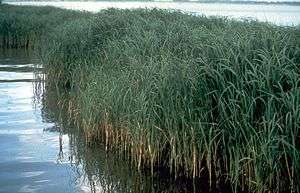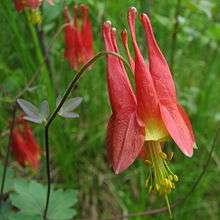Wetland indicator status

Wetland indicator status denotes the probability of individual species of vascular plants occurring in freshwater, brackish and saltwater wetlands in the United States. The wetland status of 7,000 plants is determined upon information contained in a list compiled in the National Wetland Inventory undertaken by the U.S. Fish and Wildlife Service and developed in cooperation with a federal inter-agency review panel (Reed, 1988). The National List was compiled in 1988 with subsequent revisions in 1996 and 1998.
The wetland indicator status of a species is based upon the individual species occurrence in wetlands in 13 separate regions within the United States. In some instances the specified regions contain all or part of different floristic provinces and the tension zones which occur between them.
While many Obligate Wetland (OBL) species do occur in permanently or semi-permanently flooded wetlands, there are also a number of obligates that occur in and temporary or seasonally flooded wetlands. A few species are restricted entirely to these transient-type wetland environments.
Plant species are general indicators of various degrees of environmental factors; they are however not precise. The presence of a plant species at a specific site depends on a variety of climatic, edaphic and biotic factors, and the effect of individual factors such as degree of substrate saturation and depth and duration of standing water is impossible to isolate.

A plant's indicator status is applied to the species as a whole however individual variations may exist within the species, referred to as "ecotypes"; individual plants which may have adapted to specific environments as may occur in a microhabitat, which isn't indicative of the species as a whole. The morphological differences between these ecotypes and the relevant species may or may not be easily discerned.
Indicator categories:
- Obligate wetland (OBL). Almost always occurs in wetlands (estimated probability > 99%) under natural conditions
- Facultative wetland (FACW). Usually occurs in wetlands (estimated probability 67% – 99%), but occasionally found in non-wetlands.
- Facultative (FAC). Equally likely to occur in wetlands (estimated probability 34% – 66%) or non-wetlands.
- Facultative upland (FACU). Usually occur in non-wetlands (estimated probability 67% – 99%), but occasionally found in wetlands (estimated probability 1% – 33%).
- Obligate upland (UPL). Occur almost always (estimated probability > 99%) in non-wetlands under natural conditions.
A positive (+) or negative (−) sign is used for the facultative categories. The (+) sign indicates a frequency towards the wetter end of the category (more frequently found in wetlands) and the (−) sign indicates a frequency towards the drier end of the category (less frequently found in wetlands).[1][2]
External links
- 1988 National List of Vascular Plant Species that Occur in Wetlands also at
- 1993 Northwest region 9 Supplement to the 1988 National List
- 1996 National List of Vascular Plant Species that Occur in Wetlands
References
- ↑ National List of Plant Species That Occur in Wetlands -- North Central (Region 3). Reed P. 1988. National Wetland Inventory, U.S. Department of the Interior, Fish and Wildlife Service, St. Petersburg, FL. 90 pp.
- ↑ The Concept of a Hydrophyte for Wetland Identification. Tiner R. (1991) Bioscience 41 (4) 236-246.